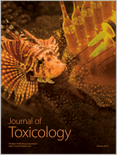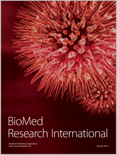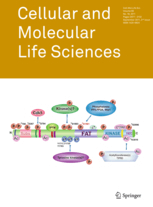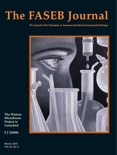
JOURNAL OF TRACE ELEMENTS IN MEDICINE AND BIOLOGY
Scope & Guideline
Unveiling the Critical Role of Trace Elements in Human Health
Introduction
Aims and Scopes
- Trace Element Analysis in Health and Disease:
The journal emphasizes research that investigates the role of trace elements (such as zinc, selenium, copper, and iron) in various health conditions, including metabolic disorders, cancer, and neurodegenerative diseases. - Environmental and Toxicological Studies:
It includes studies on the environmental presence of trace elements and their toxic effects on human health and ecosystems, often highlighting the implications of heavy metal exposure. - Nutritional and Supplementation Research:
The journal covers nutritional studies focusing on dietary intake of trace elements and their supplementation, exploring their effects on health outcomes and potential therapeutic applications. - Molecular and Cellular Mechanisms:
Research elucidating the molecular and cellular mechanisms by which trace elements influence health, including studies on gene expression, oxidative stress, and cellular signaling pathways. - Clinical and Epidemiological Studies:
The journal publishes clinical studies and epidemiological research that assess the associations between trace element levels and health outcomes in diverse populations.
Trending and Emerging
- Role of Trace Elements in Chronic Diseases:
There is an increasing focus on understanding how trace elements contribute to the pathogenesis and management of chronic diseases such as diabetes, cardiovascular disease, and neurodegenerative disorders. - Nanoparticle Applications in Medicine:
Research on the therapeutic applications of trace element-based nanoparticles is gaining traction, particularly in areas such as targeted drug delivery, cancer therapy, and regenerative medicine. - Epigenetics and Trace Elements:
Emerging studies are investigating the epigenetic effects of trace elements, exploring how they may influence gene expression and contribute to disease mechanisms, particularly in the context of maternal and fetal health. - Interplay between Trace Elements and Gut Microbiota:
The interactions between trace elements and gut microbiota are becoming a significant area of research, highlighting their combined role in health, metabolism, and disease. - Precision Nutrition and Trace Element Supplementation:
There is a growing interest in precision nutrition, focusing on individualized supplementation of trace elements based on genetic, metabolic, and environmental factors to optimize health outcomes.
Declining or Waning
- Traditional Toxicology of Heavy Metals:
Although still relevant, the focus on traditional toxicology studies of heavy metals has decreased as research increasingly shifts towards understanding the mechanisms of trace elements in biological systems and their therapeutic roles. - General Dietary Recommendations without Specific Context:
Research providing broad dietary recommendations regarding trace elements without specific contextual or population-based insights is becoming less common, as studies now emphasize personalized and context-specific approaches. - Environmental Monitoring without Health Correlation:
Environmental studies that do not directly correlate trace element levels with health outcomes or biological effects are less frequently published, as the journal aims to connect environmental findings to human health implications. - Basic Elemental Composition Studies:
Research focusing solely on the elemental composition of samples without exploring functional or health-related implications is waning, as the journal encourages studies that provide deeper insights into biological relevance. - In vitro Studies without Translational Relevance:
There is a noticeable decline in purely in vitro studies that lack clear translational relevance to human health, with a growing preference for research that bridges laboratory findings with clinical applications.
Similar Journals

JOURNAL OF BIOCHEMICAL AND MOLECULAR TOXICOLOGY
Fostering Innovation in Molecular Toxicology ResearchJournal of Biochemical and Molecular Toxicology, published by Wiley, plays a pivotal role in the advancement of knowledge within the fields of biochemistry, toxicology, and molecular biology. Established in 1998, this esteemed journal has garnered a significant reputation, evidenced by its current placement in the Q2 quartile across several categories, including Biochemistry, Health, Toxicology and Mutagenesis, and Medicine. With an ISSN of 1095-6670 and an E-ISSN of 1099-0461, it serves an international audience, offering critical insights and innovative research that shape our understanding of biochemical interactions and toxicological assessments. While it does not operate on an open-access model, the journal ensures rigorous peer review and high-quality publication standards, making it a valuable resource for researchers, professionals, and students dedicated to the exploration of molecular toxicology. The journal's recognized impact within the scientific community is reflected in its competitive rankings among specialized journals, fostering significant contributions to both academic and applied contexts.

FASEB BioAdvances
Pioneering Discoveries in Physiology and GeneticsFASEB BioAdvances, published by WILEY, is an esteemed open-access journal dedicated to advancing the fields of biochemistry, molecular biology, and physiology. Since its inception in 2019, the journal has rapidly established a significant presence within the academic community, boasting an impressive impact factor reflective of its Q2 and Q3 standings across various categories, including Biochemistry, Genetics and Molecular Biology, Cancer Research, Molecular Medicine, and Physiology. The journal aims to disseminate high-quality research and innovative findings to enhance the understanding of biological processes, making it a vital resource for researchers, professionals, and students alike. With its commitment to open access, FASEB BioAdvances ensures that groundbreaking research is available to a global audience, facilitating collaboration and exploration in these rapidly evolving scientific domains.

JOURNAL OF PHYSIOLOGY AND BIOCHEMISTRY
Empowering Scholars to Shape the Future of Health SciencesJOURNAL OF PHYSIOLOGY AND BIOCHEMISTRY, published by Springer in the Netherlands, serves as a pivotal platform for disseminating high-quality research within the fields of physiology, biochemistry, and related biomedical sciences. With an impressive impact factor reflected in its categorization as Q2 in Biochemistry and Q1 in Medicine (miscellaneous), this journal fosters a vibrant community of scholars dedicated to advancing knowledge and innovation. The journal’s broad scope encompasses a wide range of topics from cellular mechanisms to systemic physiology, making it relevant for both theoretical and applied sciences. Researchers and practitioners are encouraged to utilize the available Open Access options to reach a wider audience. The journal’s continuous contribution to the scientific dialogue since its inception in 1996 positions it as a key resource for professionals and students alike, facilitating the exploration of cutting-edge topics and collaborative research opportunities.

INTERNATIONAL JOURNAL OF BIOCHEMISTRY & CELL BIOLOGY
Exploring Innovative Insights in Cellular ScienceThe International Journal of Biochemistry & Cell Biology, published by Pergamon-Elsevier Science Ltd, stands as a pivotal resource in the fields of biochemistry and cell biology. With an ISSN of 1357-2725 and an E-ISSN of 1878-5875, this prestigious journal has been a key platform for disseminating cutting-edge research since its inception in 1995. The journal currently holds an impressive Q1 ranking in Biochemistry and a Q2 ranking in Cell Biology for the year 2023, reflecting its commitment to high-quality research and its influence within the scientific community. With a significant Scopus ranking of 94/438 in Biochemistry and 96/285 in Cell Biology, the journal plays a crucial role in advancing knowledge and fostering innovative approaches in these dynamic fields. Though it is not an open-access journal, the International Journal of Biochemistry & Cell Biology remains accessible to a wide audience, making it a vital resource for researchers, professionals, and students alike, who are eager to explore and contribute to the ongoing advancements in biochemistry and cell biology.

Journal of Toxicology
Empowering global research in toxicological science.Journal of Toxicology, published by HINDAWI LTD, stands as a pivotal open-access journal in the fields of toxicology and pharmacology since its inception in 2009. With an ISSN of 1687-8191 and an E-ISSN of 1687-8205, this journal is dedicated to disseminating high-quality research that critically examines the effects of toxic substances on living organisms. Located in Egypt and operating from their London office, it aims to provide an extensive platform for researchers worldwide to share findings that can inform better practices in safety and regulation. As of 2023, it has achieved significant recognition, holding a Q3 ranking in both the pharmacology and toxicology categories, and is indexed in Scopus with noteworthy percentile rankings (Toxicology: 57th and Pharmacology: 55th). With a focus on innovative studies and emerging areas such as environmental toxicology, biomarker research, and therapeutic interventions, the Journal of Toxicology invites both experienced researchers and students to contribute, thereby enhancing the breadth and depth of toxicological knowledge for the global scientific community.

Biomed Research International
Connecting researchers to accelerate medical science advancements.Biomed Research International is a prominent open access journal published by HINDAWI LTD, dedicated to advancing the field of biomedical research. With its ISSN 2314-6133 and E-ISSN 2314-6141, this journal has been a significant contributor to the scientific community since its inception in 2013, making scholarly work accessible to a global audience. The journal's scope encompasses a range of disciplines, including biochemistry, genetics, molecular biology, immunology, microbiology, and medicine, reflecting its commitment to interdisciplinary research. Ranked in the Q2 quartile as of 2023 across several relevant categories, Biomed Research International is recognized for its high-quality publications that foster innovation and collaboration in biomedical studies. Researchers, professionals, and students looking to share and gain insights into cutting-edge biomedical discoveries will find this journal an essential resource. With a focus on rapid dissemination of research findings, the journal serves as a vital platform for academics to engage with contemporary issues in health and disease, ultimately contributing to the advancement of medical science.

CELLULAR AND MOLECULAR LIFE SCIENCES
Unlocking the Secrets of Life at the Cellular LevelCELLULAR AND MOLECULAR LIFE SCIENCES, published by SPRINGER BASEL AG, stands as a premier journal dedicated to advancing the field of cellular and molecular biology. With an impressive 2023 impact factor reflected in its Q1 rankings across key categories—including Cell Biology, Molecular Biology, and Pharmacology—it serves as a critical platform for researchers aiming to disseminate high-quality findings in these dynamic fields. Operated under an open access framework, the journal allows broader accessibility to groundbreaking research, fostering collaboration amongst scientists globally. Based in Switzerland, CELLULAR AND MOLECULAR LIFE SCIENCES has been at the forefront of scientific publishing since 1952, adapting to contemporary scientific challenges and trends, ultimately shaping the future of life sciences.

FASEB JOURNAL
Fostering Collaboration in Cutting-Edge ResearchFASEB JOURNAL, published by Wiley, stands as a leading interdisciplinary platform in the realm of biological sciences, prominently featured in the United States. With an impressive 2023 impact factor placing it in the Q1 category across various fields including Biochemistry, Biotechnology, Genetics, Molecular Biology, and Medicine (miscellaneous), the journal is recognized for its substantial contribution to advancing knowledge and innovation. It serves as a vital resource for researchers, professionals, and students alike, providing high-quality, peer-reviewed articles that explore the molecular and cellular mechanisms underlying health and disease. The FASEB JOURNAL not only emphasizes accessible scientific communication but also fosters collaboration within these dynamic fields, making it an essential publication for anyone engaged in cutting-edge life sciences research. To explore more about the journal's offerings and access its vast repository of scholarly articles, visit their official page.

Antioxidants
Exploring the forefront of antioxidant research.Antioxidants is a premier open-access journal published by MDPI that has been actively contributing to the field of antioxidant research since its inception in 2012. Based in Switzerland, the journal holds a noteworthy impact factor indicative of its scholarly influence, particularly given its high rankings in various categories. As of 2023, it proudly sits in the Q1 quartile in Biochemistry, Clinical Biochemistry, Food Science, and Physiology, solidifying its status as a critical resource for innovative studies. With a strong focus on the roles of antioxidants across multiple disciplines—ranging from molecular biology to food science—this journal serves as a vital platform for researchers, professionals, and students aiming to advance knowledge in mitigating oxidative stress and enhancing health through dietary and therapeutic approaches. The open-access model guarantees wide accessibility, allowing for the dissemination of significant research findings globally, making it indispensable for anyone engaged in modern biochemical and physiological studies.

BIOSCIENCE REPORTS
Advancing the Frontiers of Life SciencesBIOSCIENCE REPORTS, published by Portland Press Ltd, is a prestigious journal dedicated to advancing the fields of biochemistry, biophysics, cell biology, and molecular biology. Founded in 1981, the journal has established itself as a vital resource for researchers and professionals, boasting a significant impact factor and high rankings within its categories, including Q2 in Biochemistry and Q1 in Biophysics as of 2023. The journal’s commitment to high-quality, peer-reviewed research ensures that it remains an influential platform for the dissemination of cutting-edge scientific findings. While it operates under a traditional subscription model, it offers various access options to accommodate the needs of the scientific community. With ongoing publication through 2024, BIOSCIENCE REPORTS continues to play a crucial role in shaping discussions in the life sciences and fostering innovative research in biology.